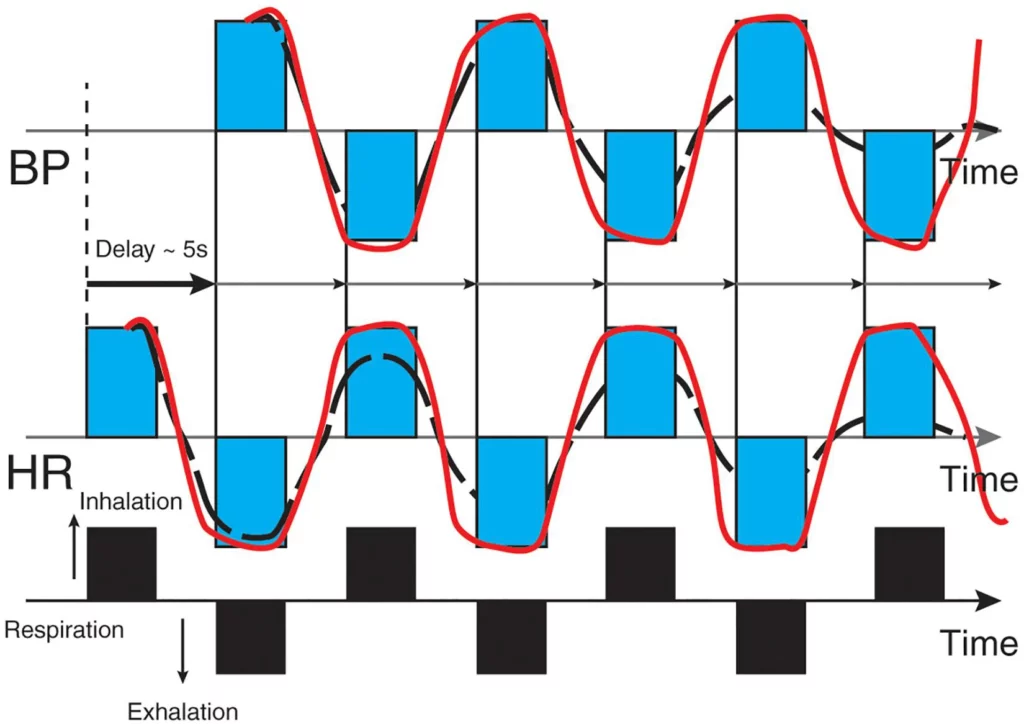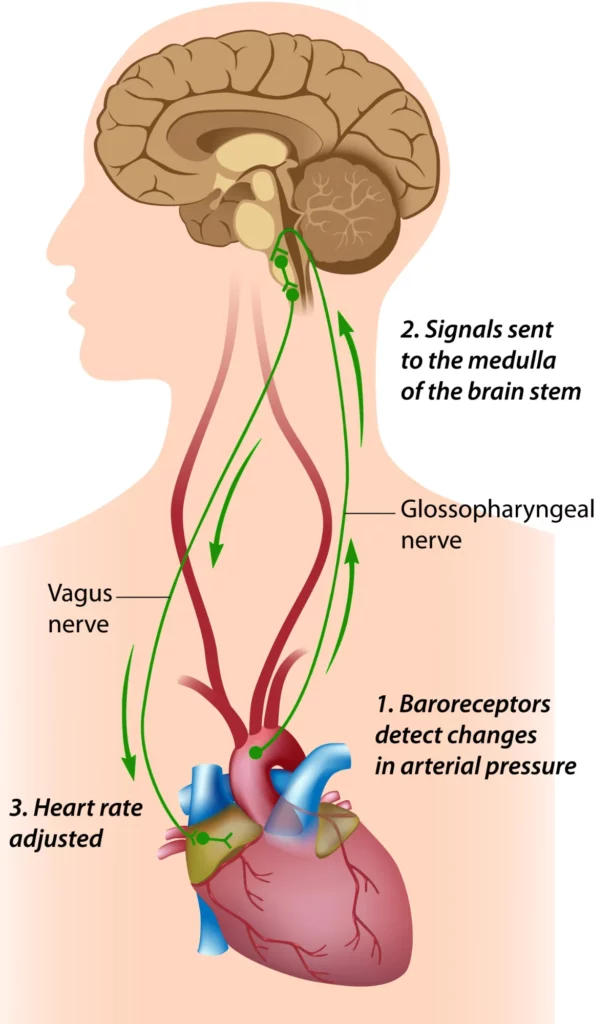Breathing forms a central part of our physiology and profoundly affects our mental, emotional and physical well-being. Throughout history, humans have adapted and developed breathing techniques to balance energy, deepen meditation and alter states of consciousness. At the same time, modern research in frequency medicine shows that the body’s bioelectric and biomagnetic fields are actively synchronized through breathwork exercises, optimizing health and well-being. Breathwork, electromagnetic fields and frequencies are closely linked and can be used to our advantage in personal health work.
The word breathwork describes a conscious work with the breath, rather than just denoting a passive process. Breathwork encompasses techniques in which you use your breath to influence physiological, psychological and energetic functions in the body. Therefore, the term reflects a systematic and intentional approach that characterizes both traditional and modern practices.
This article explores how breathwork and frequency medicine work together to reduce stress, improve mental clarity and strengthen the body’s self-healing ability.
Breathwork through history – from ancient wisdom to modern therapy
Breathwork has evolved through the ages, from yogic pranayama to advanced therapeutic practices. Both past and present, practitioners use breathwork techniques to balance energy, deepen meditation and influence states of consciousness.
Traditional breathing techniques
- Yoga & Pranayama (India) – Control breathing to balance energy and deepen meditation.
- Buddhism & Anapanasati – Breathe consciously to achieve insight and mindfulness.
- Tummo breathing (Tibetan Buddhism ) – Generating inner heat and energy with specific techniques.
- Qi Gong & Tai Chi (China) – Control life energy (qi) and improve health through breathing exercises.
- Shamanic practices – Inducing altered states of consciousness with rhythmic breathing.
- Christianity, Islam & Antiquity – Use breathing to achieve spiritual balance.
Modern developments in breathwork
Since then, breathwork has evolved further, integrating scientific insights:
- Vitalism (18th-19th centuries ) – Emphasizes the theory of a life force that drives biological processes.
- Wilhelm Reich (1930s-1950s ) – Linking breathing to mental health and emotional release as a psychiatrist and psychoanalyst. His work on bodily tension and energy paved the way for bioenergetic therapy.
- Bioenergetics (1950s ) – Releasing bodily energy with breathing and movement in Alexander Lowen’s therapy.
- Buteyko method (1950s ) – Reduce hyperventilation and balance carbon dioxide levels with this technique.
- Holotropic Breathwork (1950s ) – Explore the subconscious with intensive breathing in Stanislav Grof’s method.
- Rebirthing Breathwork (1970s ) – Processing early trauma with circular breathing according to Leonard Orr.
Current and emerging breathing techniques
Today, modern breathwork methods combine science and tradition.
- Wim Hof Method – Strengthens the immune system and increases stress resistance through rapid breathing, breath holding, cold exposure and mental training.
- Coherence breathing – Optimizes heart rate variability (HRV) and the autonomic nervous system with uni-rhythmic breathing (5-6 breaths per minute).
- Soma Breathwork – Improves energy and focus with a modern mix of pranayama, rhythmic breathing and music.
- Oxygen Advantage – Increases oxygen uptake and performance with Patrick McKeown’s method, based on Buteyko.
- Neurodynamic breathwork – Activates the nervous system and creates therapeutic effects with influences from holotropic breathwork, rebirthing and neuroscience.
These techniques are widely used in frequency medicine, mindfulness and biohacking to optimize health and well-being.
The link between breathing and frequencies and electromagnetic fields
Breathing regulates the body’s electromagnetic field and affects the brain’s electrical activity, heart rates and the bioelectrical functions of cells. By optimizing breathing, you synchronize the body’s electrical and frequency systems for increased well-being.
Breathing, brainwaves and the nervous system
Breathing directly controls the electrical activity of the brain and the autonomic nervous system. The brainstem regulates the rhythm of breathing according to the body’s needs, but you can also consciously adjust breathing to influence brainwaves and nervous system balance.
- Rapid, shallow breathing – Increase sympathetic nervous system activity and drive up beta and gamma frequencies, linked to stress and problem solving.
- Slow, deep breathing – Activates the parasympathetic nervous system and promotes alpha and theta frequencies, which support relaxation and creativity.
Therefore, you can actively control the brain’s signals and the balance of the nervous system by adjusting the breathing pattern.
Heart rate and blood pressure oscillations induced by breathing. Original publication: Lehrer and Vaschillo (2008). The future of HRV biofeedback. Biofeedback 36(1), 11-14.
This graphic shows blood pressure oscillations at the top and heart rate oscillations at the bottom. Inhalation causes an immediate increase in heart rate, followed (~5 s) by increased blood pressure and baroreceptor firing. Exhalation results in an immediate decrease in heart rate followed (~5 s) by decreased blood pressure and baroreceptor firing.
Cardiac electromagnetic fields and HRV
The heart generates a powerful electromagnetic field, stronger than that of the brain, and affects the nervous system via heart rate variability (HRV). Synchronizing the rhythm of the heart with breathing creates harmony between the heart and brain, optimizing the body’s self-regulation. Read more about HRV in the article Our emotions are our body’s working climate.
HRV sends signals to the brainstem, influences the autonomic nervous system and regulates the stress response. A stable and coherent heart rate pattern strengthens the prefrontal cortex – the brain’s center of focus and decision-making. By balancing your heart rhythm, you improve cognitive function, reduce stress and increase mental clarity.
In addition, the heart’s electromagnetic field interacts with brain waves. This connection means that an optimized breathing rhythm contributes to inner stability, better emotional control and increased resilience to stress.
Two techniques that balance HRV are:
- Coherence breathing (resonance breathing ) – Synchronizing the heart rate with breathing (5-6 breaths per minute) to activate the baroreflex and stabilize the heart rate. This improves blood pressure regulation, emotional balance and cognitive function.
- Slow, deep breathing – Calms the nervous system and increases HRV by activating the parasympathetic and vagus nerves, although it does not always produce the same rhythmic synchronization as coherent breathing.
Baroreceptor reflex
Royalty-free stock photo. Alila Sao.
In the baroreceptor reflex:
(1) baroreceptors located in the aortic arch and internal carotid arteries detect an increase in blood pressure and increase their firing rate;
(2) these signals reach the nucleus tractus solitarius in the medulla; and
3) the nucleus tractus solitarius sends signals to the sinoatrial node of the heart via the vagus nerve to slow down its rate of contraction.
Carbon dioxide and nitric oxide (NO) in bioelectric signaling
Carbon dioxide (CO₂) and nitric oxide (NO) regulate the respiratory and circulatory systems. Carbon dioxide optimizes oxygen transport via the Bohr effect, where the right levels release oxygen to the tissues. Low levels cause oxygen deficiency and imbalances in the nervous system.
At the same time, nasal breathing increases the production of nitric oxide, which dilates capillaries, improves oxygenation and optimizes the body’s electrical activity. NO also has antibacterial and antiviral properties by disrupting viruses bioelectrically.
By breathing slowly and through your nose, you balance CO₂ and NO, improving circulation, nervous system stability and energy.
Cellular respiration and energy – the electrical role of respiration
Respiration drives the body’s energy production by delivering oxygen to the mitochondria, where it is converted into ATP – the body’s energy molecule. Mitochondria use electrical charges to transport electrons and create energy. When you breathe optimally, cells get enough oxygen, providing stable energy and reducing oxidative stress. Dysfunctional breathing disrupts the process and causes energy leakage, fatigue and free radical damage, which negatively affects the body’s electrical balance.
Therefore, slow and deep breathing supports the electrical function of cells, improves energy production and reduces oxidative stress in the body’s bioelectrical system.
Conclusion – Breathing as a link to the body’s frequency system
Breathing powerfully regulates the body’s bioelectric and biomagnetic fields. By consciously controlling breathing, you influence the electrical activity of the brain, the rhythm of the heart and the bioelectrical functions of the cells.
Frequency medicine views the body as a network of electromagnetic signals, with each organ and cell having its own frequency. Breathing acts as a bridge between these systems, creating harmony between the brain, heart and nervous system – the body’s three main bioelectrical centers.
By breathing consciously and rhythmically, you help the body maintain balance, stabilize the nervous system and optimize oxygenation – factors that strengthen the bioelectric environment and improve self-healing.
This makes breathing a simple but powerful tool for long-term health and balance.
References
- The Influence of Breathing on the Central Nervous System , Bordoni et al, Cureus 2018
- Zaccaro et al. How Breath –ControlCan Change Your Life: A Systematic Review on Psycho-PhysiologicalCorrelates of Slow Breathing Front. Hum. Neurosci. 07 September 2018
- Effect of breathwork on stress and mental health: A meta-analysis of randomized-controlled trials, Nature 2023
- How Does Breathing Affect Your Brain? Smithsonian Magazine Oct 18 2022
- Effect of Resonance Breathing on Heart Rate Variability and Cognitive Functions in Young Adults: A Randomized Controlled Study, Chaittanya et al 2022, Cureus
- A Practical Guide to Resonance Frequency Assessment for Heart Rate Variability Biofeedback Shaffer et al 2020, Frontiers of Neuroscience





